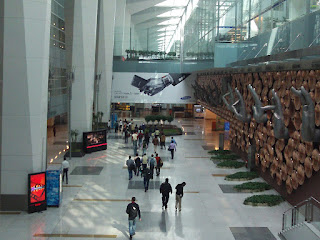To explain the Hindi numbers from 1 to 100 to someone unfamiliar with the language, it's essential to start with the basics. Hindi, one of India's prominent languages, uses its own set of numbers, and they can be related to their English counterparts through pronunciation. Each Hindi number is written in the Devanagari script, and it has a corresponding English pronunciation. For example, "एक (Ek)" in Hindi means "One" in English, and "दो (Do)" translates to "Two." Visual aids can be incredibly helpful in this process, as they provide a clear connection between the script and pronunciation.
It's important to note that Hindi numbers are grouped similarly to English, with tens and ones. For instance, "तीन (Teen)" in Hindi corresponds to "Three" in English, and "चार (Char)" means "Four." Patterns can be identified as well, such as the unique names for numbers from 1 to 10 and a common prefix used from 11 to 19, which is "सवा (Sava)" and can be thought of as similar to "teen" in English. For instance, "ग्यारह (Gyarah)" means "Eleven" (ग्यार + ह), "बारह (Baarah)" means "Twelve" (बार + ह), and so on.
The learner should practice the pronunciation of these numbers in both Hindi and English, paying attention to distinct sounds. Using flashcards with Hindi on one side and English on the other can reinforce visual recognition. Regular repetition and drilling are essential for memorization. Language learning apps, websites, or books offering audio lessons and interactive exercises can further aid in the learning process. Engaging in everyday conversations, counting objects, or discussing quantities in Hindi can make the numbers more practical. Finding a language partner who speaks Hindi can be invaluable, and learners should start with numbers 1 to 10, gradually progressing to higher numbers. Patience and persistence are key, as learning a new language, even just numbers, takes time and practice. With dedication and consistent effort, anyone can become proficient in using Hindi numbers.
Hindi numbers 1-100
एक (Ek) - One
दो (Do) - Two
तीन (Teen) - Three
चार (Char) - Four
पांच (Paanch) - Five
छह (Chhah) - Six
सात (Saat) - Seven
आठ (Aath) - Eight
नौ (Nau) - Nine
दस (Das) - Ten
ग्यारह (Gyaarah) - Eleven
बारह (Baarah) - Twelve
तेरह (Terah) - Thirteen
चौदह (Chaudah) - Fourteen
पंद्रह (Pandrah) - Fifteen
सोलह (Solah) - Sixteen
सत्रह (Sattarah) - Seventeen
अठारह (Atharah) - Eighteen
उन्नीस (Unnis) - Nineteen
बीस (Bees) - Twenty
इक्कीस (Ikkis) - Twenty-One
बाईस (Baais) - Twenty-Two
तेईस (Teis) - Twenty-Three
चौबीस (Chobis) - Twenty-Four
पच्चीस (Pacchees) - Twenty-Five
छब्बीस (Chabbis) - Twenty-Six
सत्ताईस (Sattais) - Twenty-Seven
अट्ठाईस (Atthais) - Twenty-Eight
उनतीस (Untees) - Twenty-Nine
तीस (Tees) - Thirty
इकतीस (Iktees) - Thirty-One
बत्तीस (Batees) - Thirty-Two
तैंतालीस (Taintalis) - Thirty-Three
चौवालीस (Chawalis) - Thirty-Four
पैंतालीस (Painalis) - Thirty-Five
छब्बालीस (Chabbalis) - Thirty-Six
सैंतालीस (Saintalis) - Thirty-Seven
अड़तालीस (Adtalis) - Thirty-Eight
उनतालीस (Unataalis) - Thirty-Nine
चालीस (Chalis) - Forty
इकतालीस (Iktalis) - Forty-One
बयालीस (Bayalis) - Forty-Two
तैंतालीस (Taintalis) - Forty-Three
चौवालीस (Chawalis) - Forty-Four
पैंतालीस (Painalis) - Forty-Five
छवालीस (Chhawalis) - Forty-Six
सैंतालीस (Saintalis) - Forty-Seven
अड़तालीस (Adtalis) - Forty-Eight
उनचास (Unachas) - Forty-Nine
पचास (Pachaas) - Fifty
इक्यावन (Ikyaavan) - Fifty-One
बावन (Baavan) - Fifty-Two
तिरेपन (Tirepan) - Fifty-Three
चौवन (Chauvan) - Fifty-Four
पचपन (Pachpan) - Fifty-Five
छप्पन (Chhappan) - Fifty-Six
सत्तावन (Sattaavan) - Fifty-Seven
अठ्ठावन (Athhaavan) - Fifty-Eight
उनसठ (Unsath) - Fifty-Nine
साठ (Saath) - Sixty
इकसठ (Ikasath) - Sixty-One
बासठ (Baasath) - Sixty-Two
तिरसठ (Tirassath) - Sixty-Three
चौंसठ (Chauwansath) - Sixty-Four
पैंसठ (Painsath) – Sixty-Five
छियासठ (Chhiyaasath) - Sixty-Six
सड़सठ (Sarasath) - Sixty-Seven
अड़सठ (Adarasath) - Sixty-Eight
उनहत्तर (Unahattar) - Sixty-Nine
सत्तासी (Sattaasi) - Seventy
इक्यासी (Ikyaasi) - Seventy-One
बासी (Baasi) - Seventy-Two
तिरासी (Tiraasi) - Seventy-Three
चौरासी (Chauraasi) - Seventy-Four
पचासी (Pachaasi) - Seventy-Five
छियासी (Chhiyaasi) - Seventy-Six
सत्तासी (Sattaasi) - Seventy-Seven
अस्सी (Assi) - Seventy-Eight
उनासी (Unaasi) - Seventy-Nine
अस्सी (Assi) - Eighty
इक्यासी (Ikyaasi) - Eighty-One
बासी (Baasi) - Eighty-Two
तिरासी (Tiraasi) - Eighty-Three
चौरासी (Chauraasi) - Eighty-Four
पचासी (Pachaasi) - Eighty-Five
छियासी (Chhiyaasi) - Eighty-Six
सत्तासी (Sattaasi) - Eighty-Seven
अस्सी (Assi) - Eighty-Eight
उननवे (Unnave) - Eighty-Nine
नव्वे (Nauve) - Ninety
इक्यानवे (Ikyaanave) - Ninety-One
बानवे (Baanave) - Ninety-Two
तिरानवे (Tiraanave) - Ninety-Three
चौरानवे (Chauraanave) - Ninety-Four
पंचानवे (Panchaanave) - Ninety-Five
छियानवे (Chhiyaanave) - Ninety-Six
सत्तानवे (Sattaanave) - Ninety-Seven
अस्सी (Assi) - Ninety-Eight
नौवे (Nauve) - Ninety-Nine
सौ (Sau) - One Hundred
These were the Hindi numbers from 1 to 100 along with their English counterparts. Learning these numbers is a fundamental step in understanding and using the Hindi language. You can start with the basics and gradually progress to more advanced language skills. Practice, repetition, and consistency will help you become more proficient in using these numbers in Hindi.









